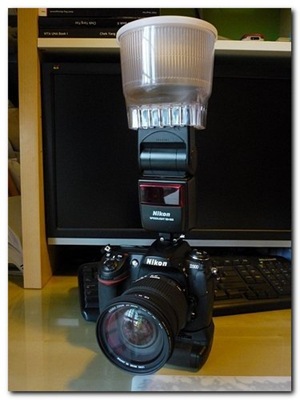 The two most significant contributing factors that account for the large image quality difference between a compact camera and a DSLR is in the size of the sensor relative to the number of pixels the camera is rated at, and the lens.
The two most significant contributing factors that account for the large image quality difference between a compact camera and a DSLR is in the size of the sensor relative to the number of pixels the camera is rated at, and the lens.
Put in other words, I’ve actually found that my old Nikon Coolpix 2200 at its ‘measly’ 2 megapixels produced better pictures at low ISO than some of the new 12+ megapixels compact cameras that come out from camera manufacturers these days. If there’s one thing you learn quickly about photography, it’s that larger megapixel counts isn’t always a good thing – no matter what the sales guy tells you.
That said, there’s another limitation of compact cameras that’s typically overlooked – and it’s the use of direct head-on flash output. Skin tones just don’t look very good under direct flash output.
It’s pretty easy to visualize the difference: just imagine yourself standing in a room where a fluorescent light is mounted on the ceiling, versus the same light source mounted right in front of you with the light rays illuminating the entire front of your body.Your skin will look overexposed, and your body will cast a harsh shadow right behind you.
 One of those basic principles in flash photography is to try making use of indirect light sources instead. There’s bouncing of the light output from your flash gun against surfaces, and there’s also light diffusion. Most flash guns have little built-in plastic screens that does the latter, but typically only the most expensive flash guns will have built-in bounce reflectors.
One of those basic principles in flash photography is to try making use of indirect light sources instead. There’s bouncing of the light output from your flash gun against surfaces, and there’s also light diffusion. Most flash guns have little built-in plastic screens that does the latter, but typically only the most expensive flash guns will have built-in bounce reflectors.
So, the solution for photographers is to typically carry around flash head attachments that’ll bounce and/or diffuse the light source that’s produced from the flash gun. You have the DIY bounce cards that you make with white sheets and velcro, the popular Stofen-inspired omni-diffusers, and diffusers that look like whaletails LOL.
I was pretty happy with the Demb Jumbo Flip-it bounce reflector I acquired last year (first picture), but unfortunately it was left behind in my hotel room during the San Francisco trip. I thought I checked the room thoroughly – but apparently not.
I went about looking for a replacement and picked up the Lambency diffuser (second picture) for cheap. The new diffuser is a knock-off from the Gary Fong lightsphere, but is at least easier to deploy than the Demb Flip-it. And the Lambency dome spreads light in a 360 degree arc. I have to dial up the flash gun output a little though to compensate for all that light that’s getting wasted
Unfortunately, the damn thing is heavy and I can almost hear my poor SB600 flashgun groaning under its weight LOL. More seriously too is that its weight unbalances the flash head at any setting other than 90 degrees i.e. straight up. And the thing is so huge and obvious when mounted onto a flash gun that it can potentially kill any kind of spontaneity you want in a picture involving human subjects, as someone in Clubsnap rightly pointed out.
So, mixed feelings. The Lambency diffuser is fine when I’m at home and taking pictures of Hannah – who fortunately at 2 Months 2 Weeks has no clue she’s my model to begin with. But I’ve resolved to DIY my own bounce reflector. I’ve got the velcro. Now I just need to find the right reflector material.:)
Recent comments